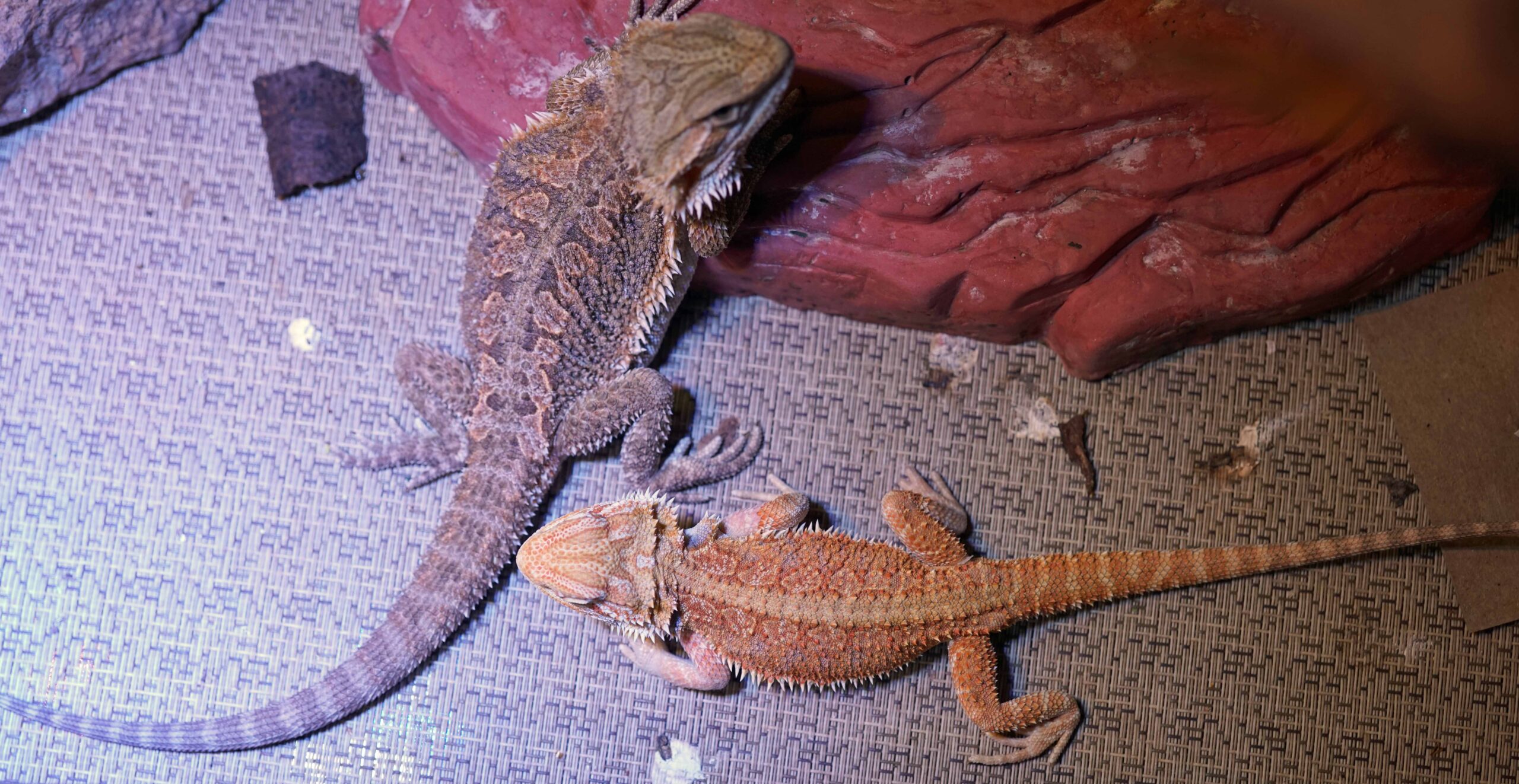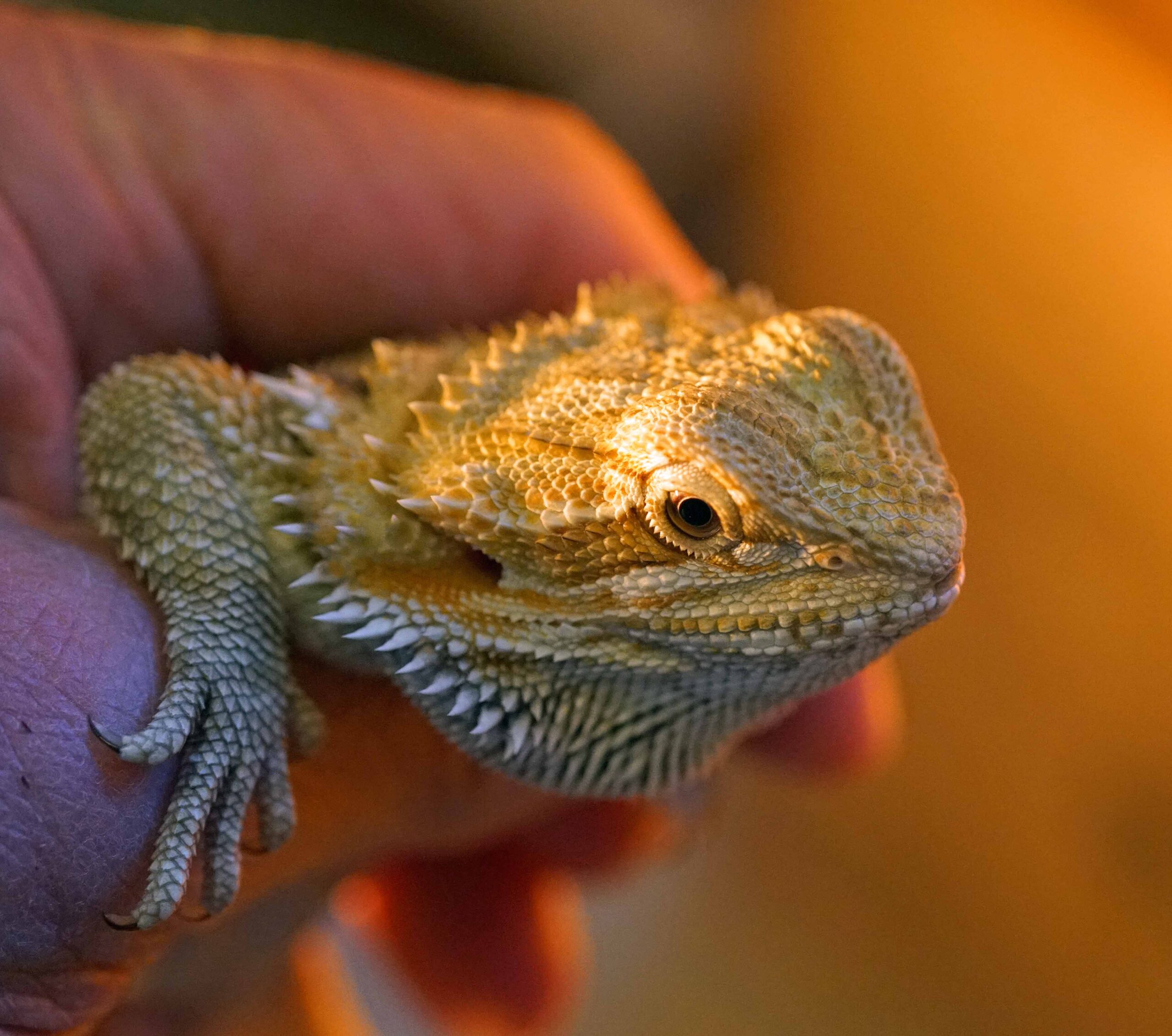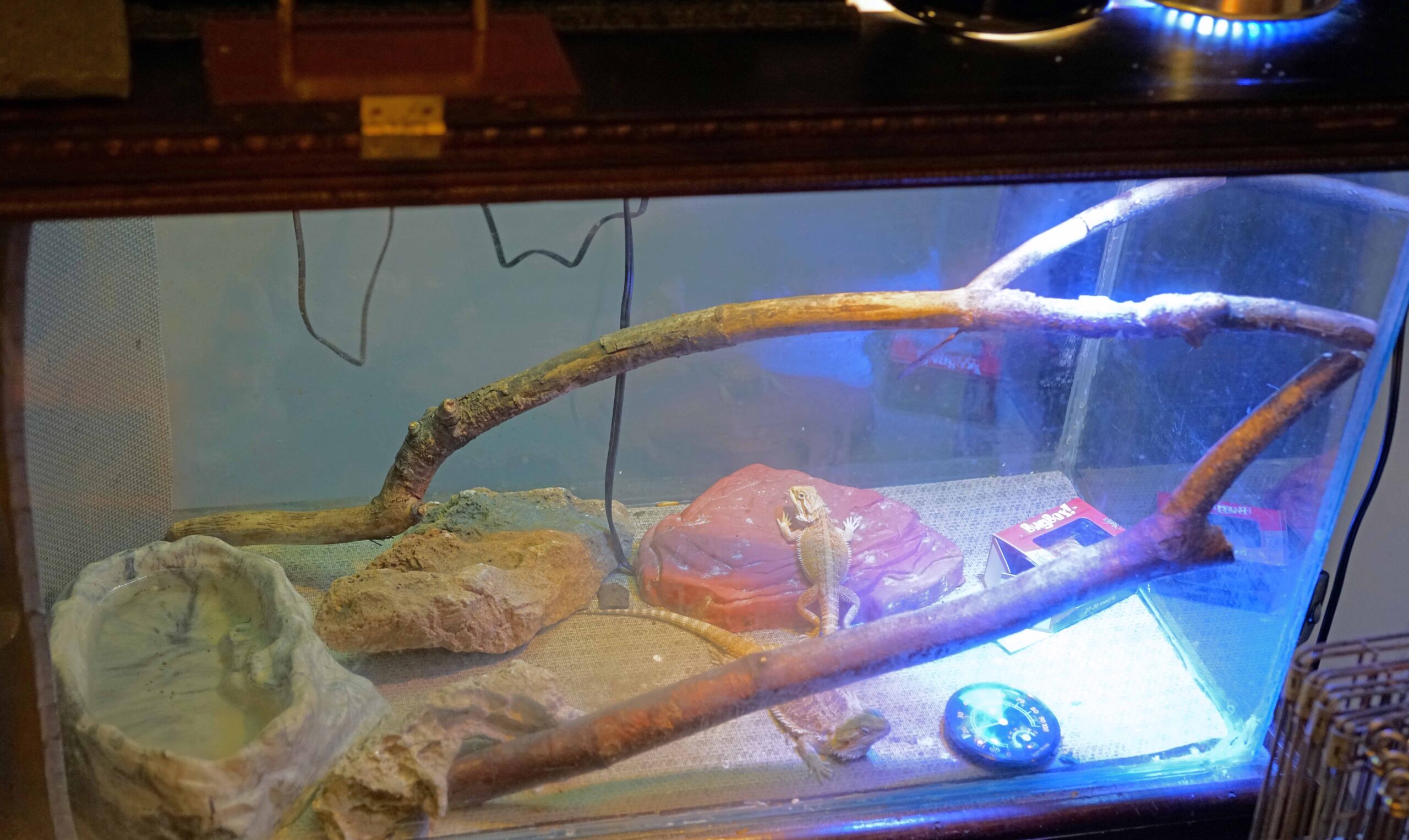These reptiles are active climbers add something in for their preferred exercise. A “hot rock,” overhead heat lamps and lights, plus a small water container are necessary. That little thermometer is a big help, especially now in this winter weather. Recently I’ve had to add an outside electric heater to keep them warm overnight.
Here on my website I usually only highlight information about wildlife and nature native to our Northwest territories. Several months ago, however, I got quite curious about a very popular species of lizards native to Australia. I had seen them in pet stores numerous times and questioned on zoological sites so often I went to PetSmart and bought a couple of Bearded Dragons. 6 Months of experience later I would like to pass on what I’ve learned. To begin with these are these most tame, hand friendly reptiles I’ve ever had experience with. I’ve raised iguanas, geckos, chameleons, boa constrictors, and a dozen other serpent species but none have been so easy to handle as my bearded dragons. I do not know why. That requires some more research, but it certainly is one of the reasons they are so popular as pets. I hope this companionship continues because these lizards can reach almost two feet in length and ten years of age. I’ll have reptilian friends for a long time. As you see from the photos above their sizes are currently quite different. Both of them were about three inches long when purchased last July but now (tail included) one is over four inches and the other over nine inches long. The larger one was more aggressive right from the start, so that is probably the reason he outgrew his partner. It could be a male – female difference. More to follow on that. The common care data bout them is true. They like mealworms and crickets, but are also very fond of lettuce. And as they age their preferences for each have changed. In the first couple of months I had them the big guy totally ignored veggies and his small friend liked it. Now those preferences have switched. Both still eat insects and lettuce, of course, I am just now surprised at the big guy’s new eagerness for veggies. Enclosure temperature for these desert origin animals is important. Yes, they do prefer at least 90 degrees so make sure you have a heat lamp and reptile hot rock in the terrarium. Finding overall care for them is not difficult but here a couple things you may not find:
-
Enclosure temperatures that drop below 80 degrees will not kill them, but do not let this continue for too long. Below 80 degrees they stop moving and eating.
-
When they are new born little guys, daily feeding is important but after they have reached about 6 inches, missing a day or two of food does not excessively harm them.
-
They make a mess! Now this is something pet shop folks may tell you know about. At least once every two weeks I have to thoroughly clean their terrarium. The large, very obvious, poops cannot and should not be ignored. Due to this I measured and cut a piece of canvas for the terrarium floor. This I can take out, spray it clean, dry it off, and put it back in fairly quickly.
-
The electric “hot rock” I bought came with a waring not to use it on anything but a glass aquarium. Fortunately the terrarium I had was something I built from glass.
-
Another thing to keep in mind is that these reptiles do require cricket and mealworm food, and that means you will be purchasing these insects quite a bit. I’m in the process of learning how to raise my own. More to follow on that.
<
>




Leave a Reply
You must be logged in to post a comment.